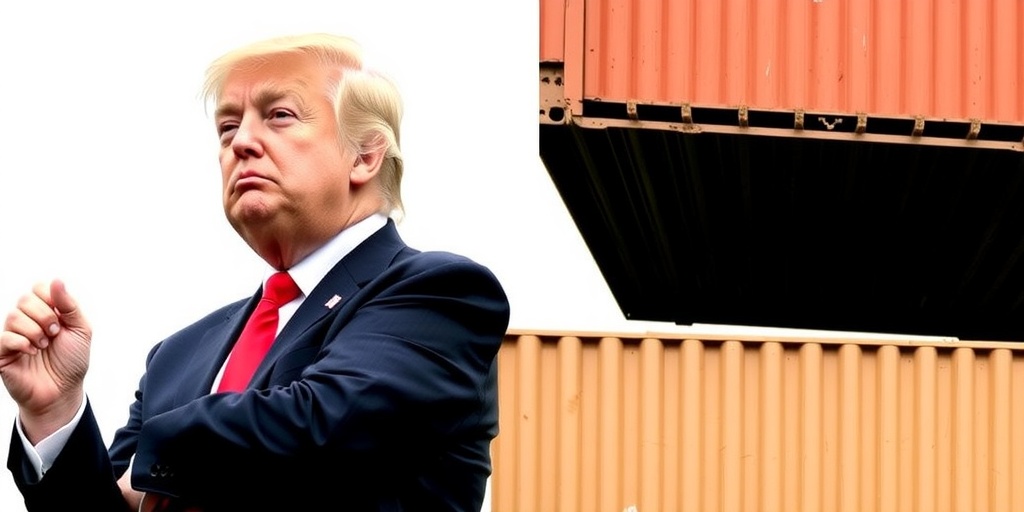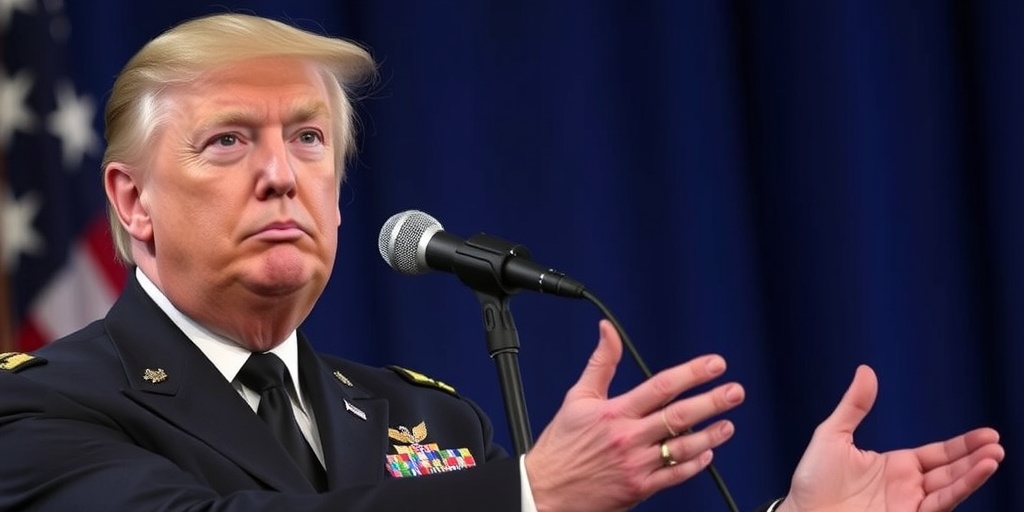Now Reading: Trump’s Tariffs Sparked by Trade Imbalances and Job Losses
-
01
Trump’s Tariffs Sparked by Trade Imbalances and Job Losses
Trump’s Tariffs Sparked by Trade Imbalances and Job Losses

Trump’s Tariff Announcement Signals Major Shift in U.S. Trade Policy
On Wednesday, President Donald Trump dramatically altered the landscape of global trade by introducing a sweeping package of tariffs aimed at a variety of foreign countries. He argued that the United States is grappling with an economic crisis driven by persistent trade imbalances, necessitating immediate and decisive action. The move is the culmination of a long-standing narrative that Trump has been vocal about for decades—one that resonated with voters concerned about the loss of manufacturing jobs and escalating trade deficits.
Trump’s belief in the need for tariffs is rooted in his perspective that the U.S. has been taken advantage of by other nations. He contends that these levies are a necessary remedy for what he describes as decades of unfair trade practices that have closed factories, devastated communities, and harmed American workers. “Every prediction our opponents made about trade for the last 30 years has been proven totally wrong,” Trump asserted on Wednesday, citing historical trade agreements like NAFTA and the Trans-Pacific Partnership as evidence of misguided policies. He emphatically stated, “We can’t do what we’ve been doing for the last 50 years.”
The President’s long-standing critiques of foreign trade practices date back to his days as a real estate developer in the 1980s. Trump often highlighted the alleged unfairness of Japan’s trade practices during its rise as an economic powerhouse, a sentiment he reiterated this week when he fulfilled his promise to push companies to produce goods within the United States.
The newly announced tariffs include an all-encompassing 10 percent levy imposed on virtually all of America’s trading partners, excluding Canada and Mexico, which are set to take effect on Saturday. Additionally, Trump has enacted increased tariffs on a number of other nations, notably China, where a new 34 percent tariff will be imposed on top of existing duties. As a result, some Chinese goods entering the U.S. could incur tariffs as high as 79 percent. This shift is significant; the average effective tariff rate in the U.S. is projected to escalate from 11 percent to over 22 percent, marking the highest levels since 1909, according to data from the Yale Budget Lab.
Using the International Emergency Economic Powers Act of 1977, Trump formally classified America’s trade deficit as a national emergency, granting him the authority to unilaterally impose these tariffs. “Chronic trade deficits are no longer merely an economic problem; they’re a national emergency that threatens our security and our very way of life,” Trump declared during his address.
While many American workers are indeed feeling the impact of jobs transitioning overseas due to lower labor costs, the overall narrative of a looming economic crisis is divisive. It appears that although there is considerable concern among various business groups regarding the retaliation these tariffs may provoke from other countries, there is also optimism that negotiations might eventually lead to improved market access for U.S. exports, particularly into Asian markets like Vietnam, India, and the Philippines.
Yet, despite acknowledging injustices faced by U.S. industries in the global marketplace, some economists and legal experts are skeptical about framing the current trade deficit scenario as a genuine crisis. Critics argue that describing the trade deficit as a national emergency is a fabricated construct designed to justify Trump’s aggressive tariff measures without seeking congressional approval or adhering to international trade regulations.
Scott Lincicome, the vice president of general economics at the Cato Institute, remarked that labeling the trade deficit a national emergency is a “stretch.” He suggests that potential legal challenges will hinge on defining what constitutes an "emergency" and whether Trump’s administration possesses the authority to enact such sweeping tariffs. Even within the ranks of industry groups—who have considered legal action to halt these tariffs—no lawsuits have yet been filed.
As discussions around legal challenges to these tariffs gain momentum, the fear looms that the trade wars sparked by these measures could engender a genuine economic crisis. Economists are wary that the new tariffs might decelerate growth and inflate prices in the U.S., with analyses predicting that their full implementation could plunge advanced economies back into recession just as they were poised for recovery.
Amid the turbulence of the stock markets following the tariff announcements, Trump’s administration remains resolute, with officials asserting that the upheaval will ultimately benefit American laborers. During a Fox News interview, Vice President JD Vance emphasized that the U.S. could no longer sustain a system that relied on borrowing from China to purchase cheap goods. “For 40 years, we have gone down that pathway,” he stated, acknowledging the magnitude of this policy pivot while asserting the necessity for transformative change.
In conclusion, the newly imposed tariffs by Trump represent not only a significant shift in U.S. trade policy but also set the stage for potential economic ramifications both domestically and internationally. The coming days and months will reveal how these tariffs will influence the broader economic landscape, and whether the anticipated benefits will outweigh the immediate disruptions they may cause.
Stay Informed With the Latest & Most Important News
Previous Post
Next Post
-
 01New technology breakthrough has everyone talking right now
01New technology breakthrough has everyone talking right now -
 02Unbelievable life hack everyone needs to try today
02Unbelievable life hack everyone needs to try today -
 03Fascinating discovery found buried deep beneath the ocean
03Fascinating discovery found buried deep beneath the ocean -
 04Man invents genius device that solves everyday problems
04Man invents genius device that solves everyday problems -
 05Shocking discovery that changes what we know forever
05Shocking discovery that changes what we know forever -
 06Internet goes wild over celebrity’s unexpected fashion choice
06Internet goes wild over celebrity’s unexpected fashion choice -
 07Rare animal sighting stuns scientists and wildlife lovers
07Rare animal sighting stuns scientists and wildlife lovers





















